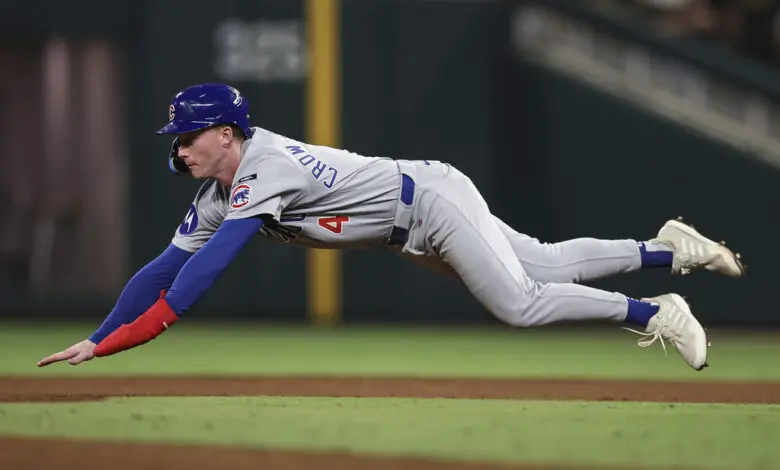
Steals Indicative of Success with Cubs Swiping More Bags Than They Have in 40 Years
The Cubs are third in MLB with 149 stolen bases, more than they’ve had in any season since 1990. They’ll pass that campaign with two more swipes and will catch the venerable 1984 Cubs with five more steals, leaving only the 1985 squad (182) with more steals in the last four decades. Even considering the new rules meant to spur more aggressive baserunning, this team’s numbers are pretty incredible given how the game has changed since the 80s.
It’s been clear that the Cubs are stealing more bases than usual, and my sense has been that doing so is a big contributor to their success. Not exactly a genius conclusion, but there are times when perception and reality don’t match up. As such, I wanted to dig into the results a little more closely. And while there are a number of factors involved here — opposing battery, lineup, situation, etc. — it does appear as though stolen bases are a pretty clear gauge of the Cubs’ win probability.
They are 36-37 this season when they don’t steal a base, yet they’re 48-25 when they do. And when they steal multiple bases, they are 32-8 so far. Which begs the question: Why the hell have there been 73 games with no steals? To be fair, many of those games saw failed attempts that might have helped to turn the tide. My research methods were such that I didn’t include them as a separate field.
Still, I noticed a 10-game stretch from July 28 to August 8 in which the Cubs didn’t even attempt a single steal. They went 4-6 over those games against the Brewers, Orioles, Reds, and Cardinals, with two of the losses coming by one run. That’s in keeping with their overall performance in the second half, as they’re ninth in MLB with 41 steals and have a 26-24 record after being 18 games over going into the break.
Would stealing more bases have gotten them from a .520 winning percentage to that .594 from the first half? Probably not, and even if it had, they’d still trail the Brewers by 2-3 games. A much bigger issue when it comes to the drop in performance is posting a .150 ISO that ranks after putting up a .190 in the first half that trailed only the Yankees (.199) and Diamondbacks (.194). But if we look at all the little facets that can mean the difference between winning and losing in big games, baserunning is at the top of the list.
Not only are you advancing runners into scoring position, but you’re putting additional pressure on opposing pitchers and defenses to execute. The Cubs have a .768 OPS this season with a runner on third and two outs, putting them seventh in MLB. I know they catch a lot of heat for not producing with RISP, but they’ve clearly done a good job of getting those runs home. And when it comes to steals, you’re talking about something teams and players have a bit more control over.
A batter can’t tell a pitcher what to throw or where to locate a certain pitch, nor can a pitcher keep a fooled hitter from luckily blooping a nearly perfect pitch into the oppo gap for a hit. Even though steals are clearly not a one-sided event, luck doesn’t play quite as much of a factor in their execution. So when you look at the difference between winning percentages of .493, .658, and .800, it’s easy to see how pushing the envelope a little more on the bases factors in the Cubs’ results.
Again, there’s a lot of noise in those numbers and it’s far from a guarantee that simply stealing more bases will mean winning more games. There’s also the chicken-egg conundrum of whether fewer steals are leading to fewer runs or fewer baserunners mean fewer steals. It’s both, of course, but I’d argue that getting less consistent offensive output means having to press the issue more when runners do reach. Pretty simple, right?
Craig Counsell reads our stuff religiously, so I’m sure this will lead to the Cubs green-lighting every baserunner from here on out.

